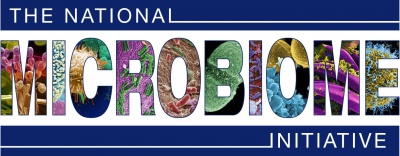Difference between revisions of "Monmouth Microbiome Initiative"
| Line 6: | Line 6: | ||
Article of interest: | Article of interest: | ||
| + | |||
| + | http://science.sciencemag.org/content/350/6260/507 | ||
| + | |||
| + | http://cen.acs.org/articles/94/web/2016/05/White-House-announces-microbiome-initiative.html | ||
[[:File:1915.full.pdf|Host-Bacterial Mutualism in the Human Intestine (2005, Highly cited)]] | [[:File:1915.full.pdf|Host-Bacterial Mutualism in the Human Intestine (2005, Highly cited)]] | ||
::''The distal human intestine represents an anaerobic bioreactor programmed with an enormous population of bacteria, dominated by relatively few divisions that are highly diverse at the strain/subspecies level. This microbiota and its collective genomes (microbiome) provide us with genetic and metabolic attributes we have not been required to evolve on our own, including the ability to harvest otherwise inaccessible nutrients. New studies are revealing how the gut microbiota has coevolved with us and how it manipulates and complements our biology in ways that are mutually beneficial. We are also starting to understand how certain keystone members of the microbiota operate to maintain the stability and functional adaptability of this microbial organ.'' | ::''The distal human intestine represents an anaerobic bioreactor programmed with an enormous population of bacteria, dominated by relatively few divisions that are highly diverse at the strain/subspecies level. This microbiota and its collective genomes (microbiome) provide us with genetic and metabolic attributes we have not been required to evolve on our own, including the ability to harvest otherwise inaccessible nutrients. New studies are revealing how the gut microbiota has coevolved with us and how it manipulates and complements our biology in ways that are mutually beneficial. We are also starting to understand how certain keystone members of the microbiota operate to maintain the stability and functional adaptability of this microbial organ.'' | ||
| − | |||
| − | |||
| − | |||
| − | |||
==Proposed Monmouth College involvement== | ==Proposed Monmouth College involvement== | ||
Revision as of 13:06, 7 June 2021
"Today (May 13, 2016), the White House Office of Science and Technology Policy (OSTP), in collaboration with Federal agencies and private-sector stakeholders, is announcing the National Microbiome Initiative (NMI). The NMI aims to advance understanding of microbiomes in order to aid in the development of useful applications in areas such as health care, food production, and environmental restoration."
Taken from https://www.whitehouse.gov/blog/2016/05/13/announcing-national-microbiome-initiative
Article of interest:
http://science.sciencemag.org/content/350/6260/507
http://cen.acs.org/articles/94/web/2016/05/White-House-announces-microbiome-initiative.html
Host-Bacterial Mutualism in the Human Intestine (2005, Highly cited)
- The distal human intestine represents an anaerobic bioreactor programmed with an enormous population of bacteria, dominated by relatively few divisions that are highly diverse at the strain/subspecies level. This microbiota and its collective genomes (microbiome) provide us with genetic and metabolic attributes we have not been required to evolve on our own, including the ability to harvest otherwise inaccessible nutrients. New studies are revealing how the gut microbiota has coevolved with us and how it manipulates and complements our biology in ways that are mutually beneficial. We are also starting to understand how certain keystone members of the microbiota operate to maintain the stability and functional adaptability of this microbial organ.
Proposed Monmouth College involvement
- 1) Biochemistry Research (Sturgeon/Moore/Goach)
- The Hollow Fiber System
- Microbial Biotransformation of Endogenous and Exogenous Biomolecules (Sturgeon/Kieft Summer Research 2016)
- 2) Wellness (J. Braun)
- 3) Modeling (Fasano/M. Sostarecz)
- 4) Educational Garden/Raw Food/Soil (Watson/Engstrom)
- Can we track, then model microbe spread through the "fields" (ex. blueberries, raspberries, strawberries, veggie plots)
Goal: Submit an NSF proposal to fund on-campus research activities.
Education
American Gut Project
- American Gut Project is a part of the Microsetta Project
Researchers
AGP Publications
American Gut: an Open Platform for Citizen Science Microbiome Research, mSystems (2018), 3(3)
Other Videos
Microbiome: Gut Bugs and You | Warren Peters
Food Related Projects
Sour Dough Starter/Bread
Vegetable List
Vegetable List (Wikipedia) Human Gut Bacterial Communities Are Altered by Addition of Cruciferous Vegetables to a Controlled Fruit- and Vegetable-Free Diet (cited 97 times, June 2021)
